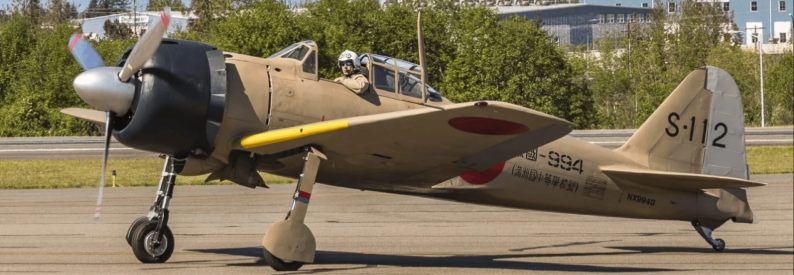Restored Mitsubishi A6M3 Zero Completes First Flight

After decades grounded since World War II, a Mitsubishi A6M3 Zero Model 32 returned to the skies on May 5, 2025, marking the first flight by this variant since 1945. The historic test took place at Paine Field in Everett, Washington, where Mike Spalding, chief pilot of the Military Aviation Museum, climbed into the cockpit at 08:00 local time to conduct initial handling and performance checks. The aircraft, originally built for the Imperial Japanese Navy, emerged from an exhaustive restoration by Legend Flyers and museum staff, who meticulously rebuilt its airframe, systems, and historic livery.
The Military Aviation Museum, based in Virginia Beach, announced the successful sortie in a statement highlighting the Zero’s significance as America’s principal adversary in the Pacific theater. Museum Director and CEO Keegan Chetwynd emphasized that flying such an icon helps honor the US naval and Marine Corps aviators who battled these aircraft and secured freedoms still enjoyed today. After taxiing to runway 34L, Spalding headed west over Possession Sound in a designated flight-test area, flying several circuits to evaluate control response, engine performance and overall stability before returning for a smooth landing.
Spalding praised the Zero’s light controls and balanced handling on his post-flight inspection. “It handled very nicely and was light on the controls,” he said, noting only minor trim adjustments were needed after the first flight. Although he had decades of experience in vintage military aircraft, this was his first time flying a Mitsubishi Zero. His familiarity with the Pratt & Whitney R-1830 engine installed in place of the original Nakajima Sakae 12 provided added confidence, as the restoration team had tailored the airframe to accommodate the substitute powerplant while preserving the Zero’s historic flight characteristics.
The restored Zero began its journey in 2019 when Legend Flyers and the museum formed a partnership to locate parts, reconstruct damaged components and replicate original materials. The project involved fabricating replacement panels, refurbishing cockpit instruments and sourcing period-correct hardware from around the world. Ground crews and engineers worked alongside museum volunteers to test fuel systems, hydraulics and electrics before the prototype took taxi tests earlier this spring.
On flight day, dozens of museum staff, restoration technicians and historical experts supported operations from the control tower and taxiways. The team monitored engine gauges, control deflections and structural behavior to ensure every system performed within safe parameters. Once satisfied, Spalding taxied back for debrief, where data loggers confirmed the aircraft met or exceeded expected performance metrics for climb rate, cruise speed and maneuverability.
With this milestone achieved, the museum plans additional flights to further evaluate long-duration engine runs, systems endurance and handling under various weather conditions. Pending regulatory clearance and pilot endorsements, the Zero will join the museum’s flying collection for airshow appearances and educational outreach, offering audiences a rare opportunity to witness a genuine World War II Japanese fighter in action.
By restoring one of the Pacific War’s most iconic aircraft to full flightworthiness, the Military Aviation Museum not only preserves aviation heritage but also deepens public understanding of the conflict’s technological and human dimensions. As the Model 32 Zero once again graces the skies, it carries forward a powerful legacy of innovation, sacrifice and the enduring importance of remembering history through living artifacts.
Related News : https://airguide.info/category/air-travel-business/airline-finance/
